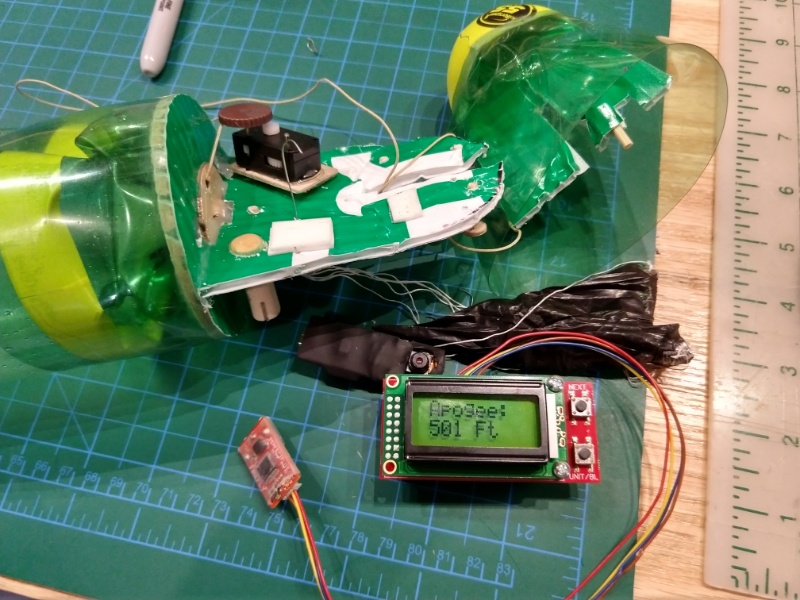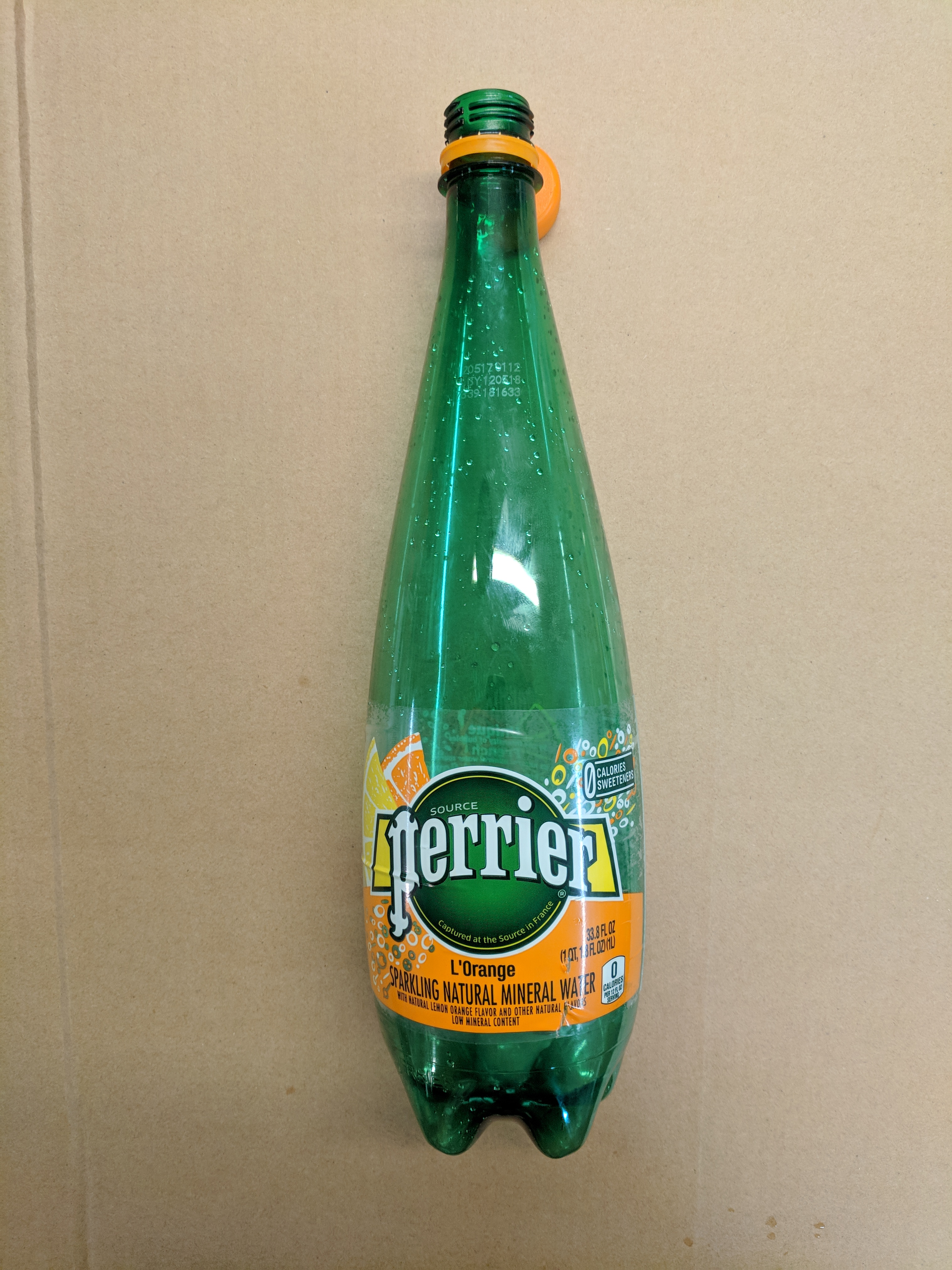Page 1 of 2
Stability Question
Posted: Wed Aug 22, 2018 12:31 am
by Terranoid Labs
On my first few prototypes everything was sort of a guessing game, but I did know I wanted them to fly straight, so they had some good sized fins and they flew straight. The next step was to shed mass, so the first thing I did was to downsize the fins and everything still seemed to be fine. Then I started to make the payload lighter and started to notice a little wobble. So I'm pretty sure I've changed the center of mass enough to make the fins less effective.
Since then I've been knee deep in Open Rocket trying to optimize things and my current thinking is that I've gone from somewhere shy of 1 cal of stability to closer to .6 cal with the adjustments. The rockets still fly "straight up" but the wobble is there for sure. I've seen recommendations between 1-2 cal for good stability, but I've also read that you don't want to be over stable. Based on what Open Rocket is showing me, there is a huge difference between 1-2 cal when it comes to fin size.
So, assuming the mass of the rocket is a constant and the center of mass is constant (able to be adjusted with the changing mass of the fins), is there an optimal stability caliber to go as high as possible? Or is overall mass more important?
Rocket science is blowing my mind.

Re: Stability Question
Posted: Wed Aug 22, 2018 10:09 am
by retrotec29
Measured stability in Open Rocket is an average. I think you should venture into a little more advanced modeling to answer you question. The pressure vessel can be modeled in Open Rocket along with its depleted mass. Apogee Rockets has a great tutorial on using Thrust Curve to create that “motor” model. The CG and to a certain extent the CP will be affected by the depleted mass. In smaller water rockets the depleted mass is a big deal. It could be more than half the total mass. An over stable rocket is not nessisarily a bad thing when you take this into consideration. Much of the total flight time to apogee is at very slow speeds. Over stable designs have an advantage there. But wind and drag become more pronounced factors. The +1 cal rule is always good in my opinion. Open Rocket can produce some anomalys though. I have made some designs that fall below the 1 cal mark but have large fins. Very low drag but with elements of high stability. That is when it gets fun because you just need to build and fly.
Re: Stability Question
Posted: Wed Aug 22, 2018 3:48 pm
by anachronist
Wobble can also be the result of turbulent flow around the fins. Turbulent flow can result from a too-sharp transition between the nose cone slope and the cylindrical body of the rocket, or putting the fins into the wake turbulence formed by the airflow separation at the taper to the nozzle, if the taper is too rapid. I'm skeptical that Open Rocket accounts for that. CFD analysis can help, but the calculation time is so slow and the CFD problem is so complicated to set up that it's usually more efficient (and fun) just to build experimental rockets and fly them.
Re: Stability Question
Posted: Wed Aug 22, 2018 7:47 pm
by retrotec29
I will second all that. And add some more. I just got back from a semi productive afternoon at the range. Remove all the sharp transitions and increase the aft taper and great things happen. I just sent a one liter rocket over 500 feet (100 psi). On board was an altimeter and camera. First flight was successful but the second failed to deploy the recovery. I think the G forces jammed the nose cone in place. I will not make the same mistake twice.
[attachment=0]IMG_20180701_151311482_HDR.jpg[/attachment]
Re: Stability Question
Posted: Wed Aug 22, 2018 7:52 pm
by retrotec29

- IMG_20180822_162741453_HDR_1534981874713_1.JPG (177.21 KiB) Viewed 92 times
Re: Stability Question
Posted: Wed Aug 22, 2018 9:19 pm
by Terranoid Labs
Thanks for the tips guys. I've had some issues getting the motors modeled properly in Open Rocket so I've got some work to do, but I think this answers some of my questions and points me in the right direction. Hope to get out and test a couple new fin designs in a few days.
Oh man retrotec29, that's impressive. I'm using the same bottle with a similar design and was hoping to sneak in a record attempt before you got to 500 ft! I've been able to get in the 420 range fairly consistently while dialing in the deploy mechanism. I had the exact same problem with the nose cone too. Nice work.
Re: Stability Question
Posted: Wed Aug 22, 2018 10:22 pm
by anachronist
What kind of soda bottle is that? I've looked for 2 years in my local stores for bottles with smooth tapers like that, and the only ones I find tapered like that are glass bottles.
Re: Stability Question
Posted: Wed Aug 22, 2018 10:38 pm
by Terranoid Labs
My local Kroger is carrying these Perrier bottles:

- Perrier Bottle.jpg (3.28 MiB) Viewed 82 times
Re: Stability Question
Posted: Thu Aug 23, 2018 1:15 am
by anachronist
Huh. OK< I will look for those. The only Perrier bottles I recall seeing are glass. Thanks.
Re: Stability Question
Posted: Thu Aug 23, 2018 7:32 am
by retrotec29
Bottle is thin and light. Great for the pressure chamber. But a bit of a pain for the fairing and nose cone. Lots of flexing and buckeling can happen. I have a few bugs to work out still Terranoid. So keep going.
Re: Stability Question
Posted: Sun Sep 02, 2018 12:38 am
by Terranoid Labs
Finally had a chance to get out and test new fins last night with decent results. I made two sets, one just a bit larger than the other and had two very nice launches. Both tracked straight and true, and as far as I can tell are right around 1 cal. The larger set gave me my best altitude so far at 427 feet, which is about 10-15 feet higher than the wobbly flights and about 7-8 feet higher than the best launches of this rocket. I'm leaning toward going larger still for the next launch to see if I can't squeeze out a few more feet, or at least find out where the ceiling is on fin size/altitude.
Yeah, I'm having too much fun to stop retrotec, record or not - although it is addictive to try keep going higher. Still working on reliability and have a broken camera to show for it, so I've got work to do too.
I'll second what you said about the nose cones, it's all a bit fiddly to fit together.
Here's the first version that before the wobble kicked in:
Re: Stability Question
Posted: Sun Sep 02, 2018 12:43 am
by Terranoid Labs
Here are the new fins:
Re: Stability Question
Posted: Mon Sep 03, 2018 7:35 pm
by Rocket_Scientist

Wowsers! 500 feet will be officielly achieved soon!
What are your dry weights?
Re: Stability Question
Posted: Mon Sep 03, 2018 11:40 pm
by Terranoid Labs
I'm at 115 grams right now.
Re: Stability Question
Posted: Tue Sep 04, 2018 2:16 pm
by retrotec29
Terranoid I love it! Glad to see you went to three fins. That will drop the drag quite a bit. Dry weight on my last version was 103g. I have some good ideas to drive it down to 95g ish. The new airframe is complete and I have begun work on the recovery pod. I will be interested in your stability assessment on the new version. If your stability issue persists the culprit could be the nose cone. Pointed nose cones can create unstable air flows at subsonic speeds. The rear taper is actually the most important part of the equation. The taper creates suction across the airframe and influences airflow across the nose cone. If you can stabilize the flow across the air frame your fins become more effective for the given size. Less airframe length+smaller fins=less drag.

 Wowsers! 500 feet will be officielly achieved soon!
Wowsers! 500 feet will be officielly achieved soon!